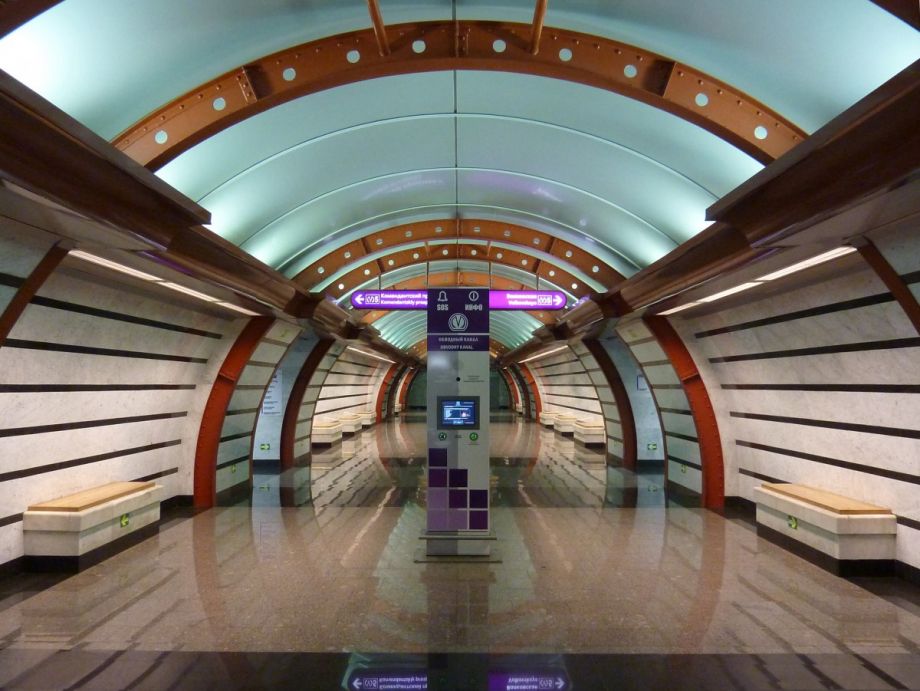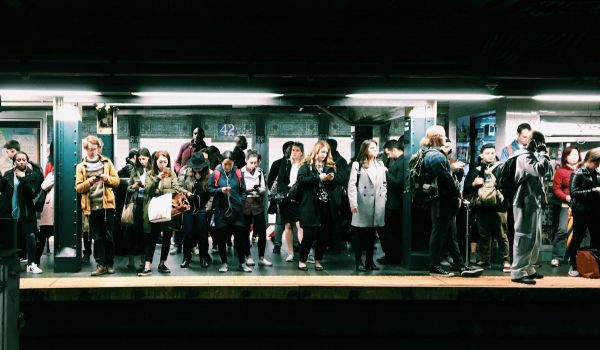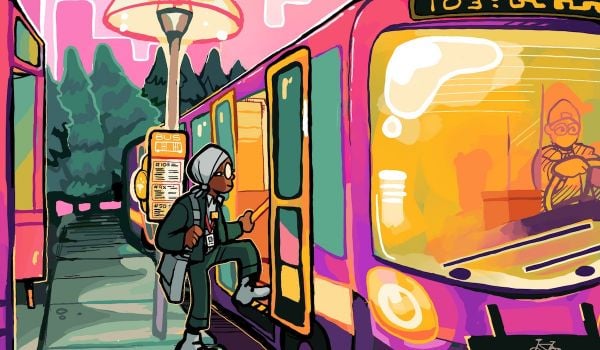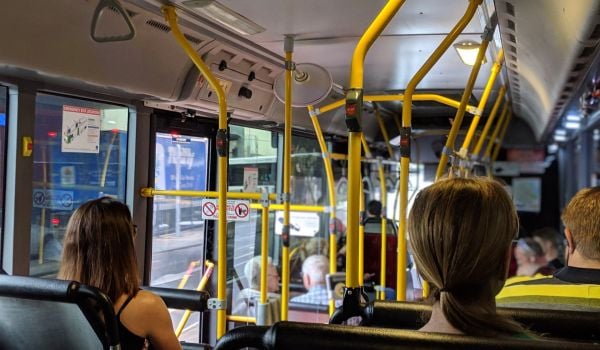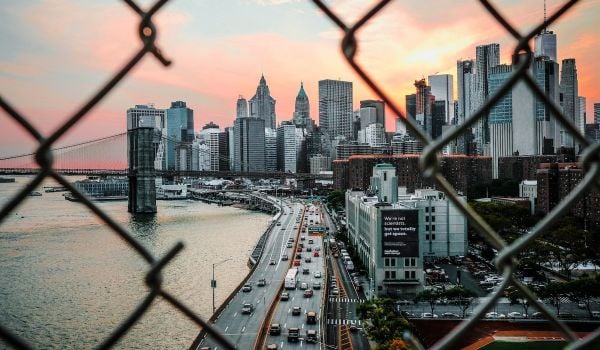Our weekly “New Starts” roundup of new and newsworthy transportation developments worldwide.
New Metro Extension Opens in St. Petersburg
Metro Report International reports that a new three-station southerly extension of the St. Petersburg metro’s Line 5 opened for service Oct. 3. The 6.4-km (4-mile) extension cost 34 billion rubles (US$523.77 million) to build.
The extension takes the line from Mezhdunarodnaya to Shushary, mostly in a two-track cut-and-cover tunnel. Its northern section used deep-bore tunnels to reach the 59-meter-deep (193.6-foot-deep) Prospekt Slavsky, then rose to reach the 19-meter-deep (62.3-foot-deep) Dunaskaya station. A short section of at-grade line at the southerern end terminates at Shushary station.
A new storage yard on the line just east of the Shushary terminus allows trains on Line 5 to be lengthened to 10 cars each. The extension can handle 40 trains per hour in each direction (1.5-minute headways), and ridership at the three new stations is projected to be 997,000 passengers per day.
Delhi Metro Grey Line Opens
Meanwhile, in India, the newest and greenest line of the Delhi Metro welcomed its first passengers Oct 4, the International Railway Journal reports.
This greenest line is the Grey Line, or Line 9 of the Delhi Metro. Its first segment is a three-station, 4.2-km (2.6-mile) stretch that runs from an interchange with the Blue Line (Line 3) at Dwarka west to Najafgarh.
What makes it green? Delhi Metro Rail Corporation Managing Director Mangu Singh told the audience at the opening ceremony, “All three stations on this section have been rated as ‘platinum’ for their adherence to green building norms.” The two elevated stations on this first segment also have solar power panels on their roofs.
The line is the second fully automated driverless line on the Delhi Metro system. Its opening brings the total extent of the Delhi Metro system to 377 km (234.3 miles) and 274 stations, including the Greater Noida Corridor line (Aqua Line), which is connected to the Delhi Metro system but operated by a separate company.
The remaining 1.2-km (0.75-mile) segment of the Grey Line, from Najafgarh to Dhansa Bus Stand, is set to open in December 2020.
The Delhi Metro is India’s largest and busiest rapid transit system. Its first segment opened in 2002, making it the country’s second-oldest metro system after the one in Kolkata.
Calif. Representative Calls for Housing Near Transit Stations; NJ Transit Seeks to Build Around Its Own
Two developments on opposite coasts highlight once again the connection between rail transit and urban land use.
On the West Coast, U.S. Rep. Scott Peters, a Democrat who represents a district that includes part of San Diego, announced a piece of legislation that would tie federal transit funding to the construction of housing around transit stations. As Next City has previously reported, the straightforwardly named “Build More Housing Near Transit Act” could help ease the housing shortage in and around San Diego.
Peters said at a news conference announcing the bill that Federal Transit Administration officials “should be asking: ‘What are you doing to build housing near it?’, to make sure that we have ridership and we get people out of their cars and that taxpayers get their money’s worth and we get the environmental benefits of transportation.”
And speaking of “make sure that we have ridership,” New Jersey Transit Corporation (NJT) on the other coast is taking a step to make sure it has ridership on its most-lightly-used light rail line: the River Line, a diesel light-rail line that connects Trenton with Camden via a series of towns along the Delaware River.
Railway Age reports that NJT is seeking expressions of interest from developers willing to build transit-oriented development projects on land it owns next to stations along the 37-mile line. The River Line has a total of 20 stations in 15 communities along the line. Some of them, including the four in Camden, three in Trenton and one in Burlington, are already located in developed urban areas, but many of the others are located in lightly-developed suburban or even semi-rural areas. In addition, some of the urban stations are in areas officials hoped would be revitalized by the line.
The projects should support regional planning and economic development goals along with NJT’s transportation mission, according to the article.
“This is a great opportunity for developers to get in on the ground floor and help create thriving local communities,” NJT President and CEO Kevin Corbett. said in the article. “So many cities and townships in New Jersey have grown and benefited from their proximity to NJ Transit service, and we want to accelerate that growth in partnership with our host communities by promoting and encouraging mixed-use TOD on our River Line Light Rail system.”
The River Line could use the assistance. Its projected daily ridership of 5,500 when NJT began planning for it was too low to qualify for federal funding, and today, 15 years after it opened in 2004, average daily ridership has yet to hit 10,000, generally fluctuating between 8,000 and 9,000 daily riders on average.
Know of a project that should be featured in this column? Send a Tweet with links to @MarketStEl using the hashtag #newstarts.

Next City contributor Sandy Smith is the home and real estate editor at Philadelphia magazine. Over the years, his work has appeared in Hidden City Philadelphia, the Philadelphia Inquirer and other local and regional publications. His interest in cities stretches back to his youth in Kansas City, and his career in journalism and media relations extends back that far as well.
Follow Sandy .(JavaScript must be enabled to view this email address)

